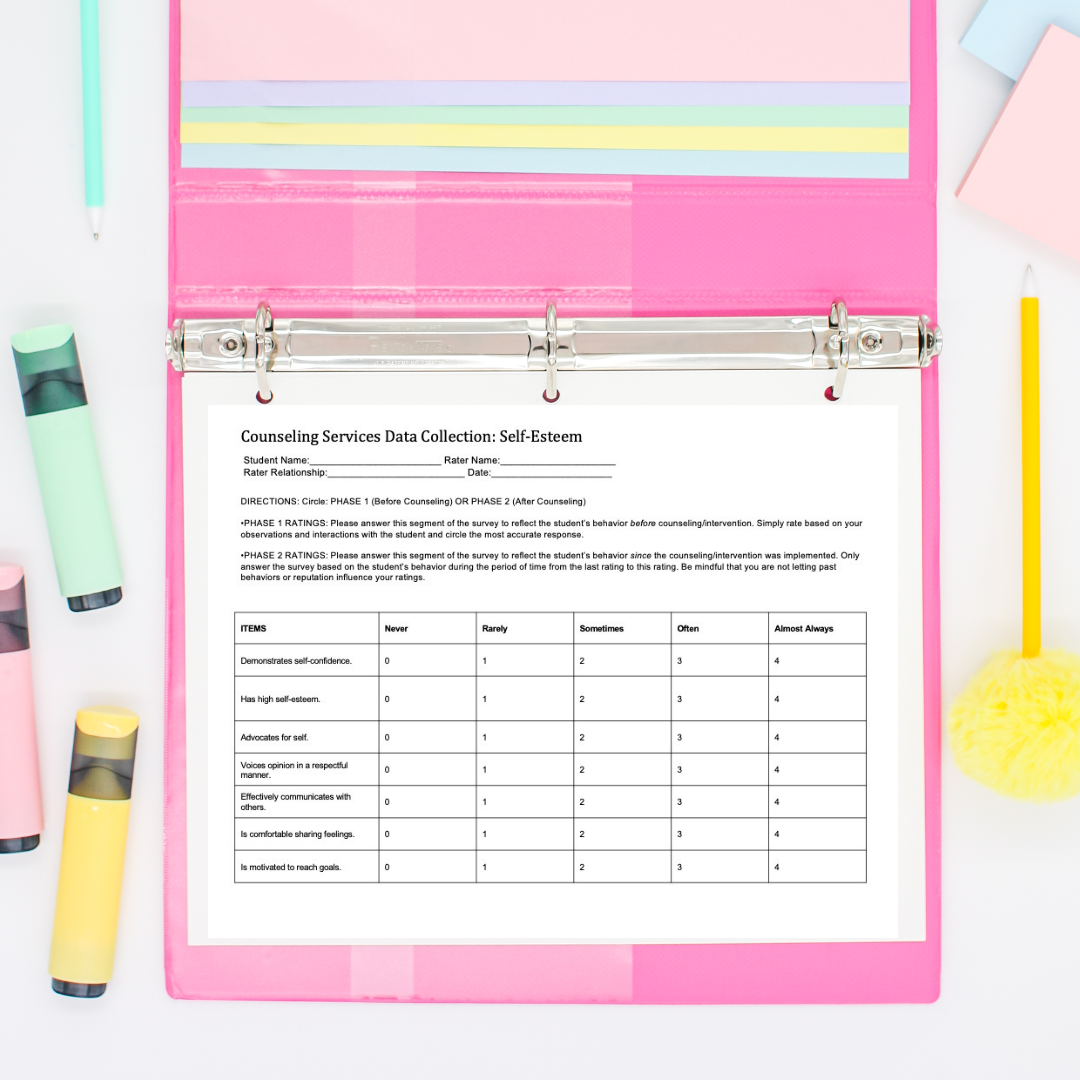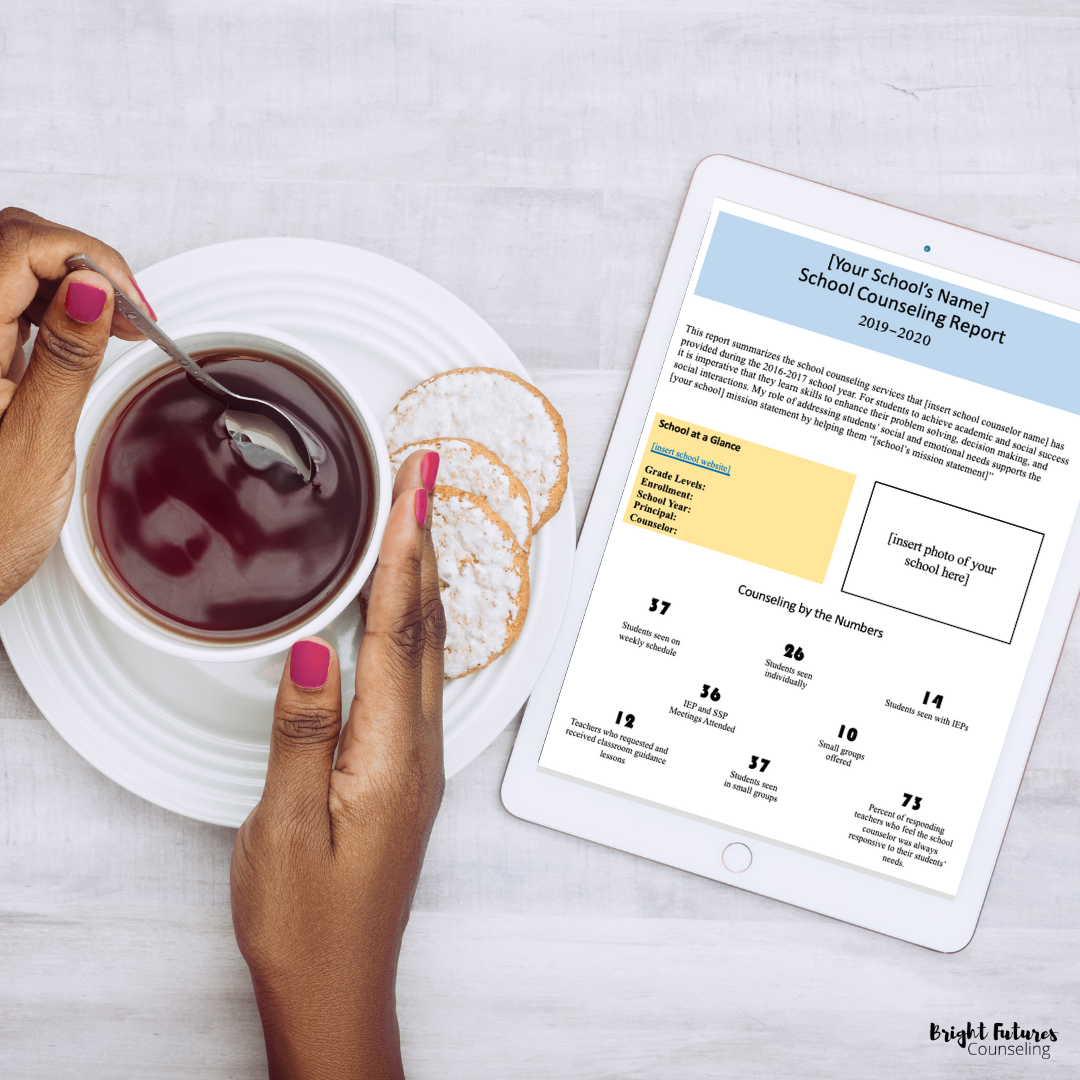5 Strategies for Stress Free Data Collection
I am passionate about collecting data. Data collection affirms that you are actually helping students and showcases program results. This makes it an integral part of your counseling program. Read this blog post if you need some more convincing on why you should start collecting data!
I'm in! But How Do I Collect Data?
Before you start collecting data, you need to divide your data collection tools into 2 categories; quantifying sessions provided and quantifying student progress.
Quantifying Sessions Provided
Quantifying sessions provided (aka how many kids you see) allows you to advocate for your role and show a need for your position. This data shows who you are seeing and how you are seeing them. This is great information to have when you are organizing your End of the Year Report.
1. Google Calendar
Not only is a Google Calendar a great way to keep your schedule organized, but it can help log your visits with students as long as you keep it updated! If a session is canceled because of an absence, holiday, etc be sure to delete the appointment from the calendar. When you are collecting data and want to see how many times you met with a student simply search their name in the calendar and count the sessions! Super simple.
Not a techy person? You could use a paper calendar as well, but I find making edits to appointments easier on a digital platform. If you insist on using paper at least use a pencil so you can erase!
2. Counseling Log and Caseload Spreadsheets
You can also use a counseling log and caseload spreadsheets to track students served. Your caseload sheet will show all of the students you work with, and your log will indicate when exactly you met with them. Cross-referencing the log with your calendar allows for more accuracy when tracking the numbers!
Quantifying Student Progress
Quantifying student progress assesses how students have been doing since they've been in counselng with you. It basically shows if they are improving or not!
3. Self-Assessments
A self-assessment is a quick questionnaire you give students before and after each group or set of individual sessions (usually about 6-8 weeks).
Which Questions Do I Include on a Self-Assessment?
The questions included depend on the topic (self, control, grief, relational aggression, etc) and can be one of two categories:
-
Objective learned - This is a right or wrong answer that can be answered objectively. (ex: 'Can you name 5 coping strategies?')
-
Feelings based - This is answered subjectively and has no definitive correct answer. (ex: 'I feel sad more often than I feel happy.')
You can use one self-assessment with a mix of the two topics or you can separate it by factual and feelings based questions.
How do I send a Self-Assessment?
You can use a paper version or a Google Form. The Google Form is perfect for distance learning, and I believe it's superior in person too so you don't have to re-input information into a digital report later. Plus the Google Form displays the results in an easy to interpret fashion so you can see time-stamped responses. This allows you to see how students changed over the weeks and you can display this information using pretty charts and graphs!
4. Behavior Progress Monitoring Surveys
Another way you can quantify student progress is by using Behavior Progress Monitoring Surveys. It's a long name, but these are really quite simple. You send these surveys to parents and teachers before and after services provided so they can rate how their child/student is doing. You can also send one mid-services to ensure your counseling methods are on the right track. Use this feedback to adjust and tweak your program to best serve students' needs.
Below is an example of a questionnaire you would send.
5. End of the Year Report
What is an End of the Year Report?
An End of the Year Report is exactly what it sounds like. A report you create at the end of the year to show how many students you served, how many guidance lessons you taught, and even how much time you spent with students! You can use it to show anything; student self-assessment and survey data, behavior progress individual students made, etc.
Why use an End of the Year Report?
It is a great way to reflect on your program's progress and feel proud of all of your hard work! This is where you will showcase the data you've been collecting all year. Your stakeholders can see what's working (and sometimes what's not!). This way you can modify your program to best fit all student needs.
How do I create an End of the Year Report?
Everyone's will look a little different, but start by gathering any data you have and compiling it in a report. You can do text only or create charts and graphs to show student progress.
Here are some must-have stats you don't want to forget:
-
Number of students served (broken down into individual and small group)
-
How much time you spent with students (average minutes per session over how many weeks)
-
Class guidance lesson topics covered and how frequently you taught them
-
Character education school-wide activities you hosted or implemented
-
PD, conferences, or trainings you attended or presented at
-
IEP, SST, etc meetings that you attended (include how many hours)
This is a chance for you to brag on yourself and show the need for your program! The data collected allows you to self-assess your program and share the results with your team.
An End of the Year Report is the ultimate self-advocating tool. In my first year counseling, I made one and my principal was so impressed he sent it to our superintendent who personally emailed me to say thank you! This was huge progress! And not just for my individual position, but for proving how essential school counselors were throughout our district.
Why Should I Collect Data?
Collecting data allows you to:
-
Advocate for your role and program
-
Assess and finetune your services to best meet student needs
These two things increase your impact and help you get the recognition you deserve!
Download my Stress Free Data Collection Freebie for more detailed examples on how to implement these strategies!
SHARE:









